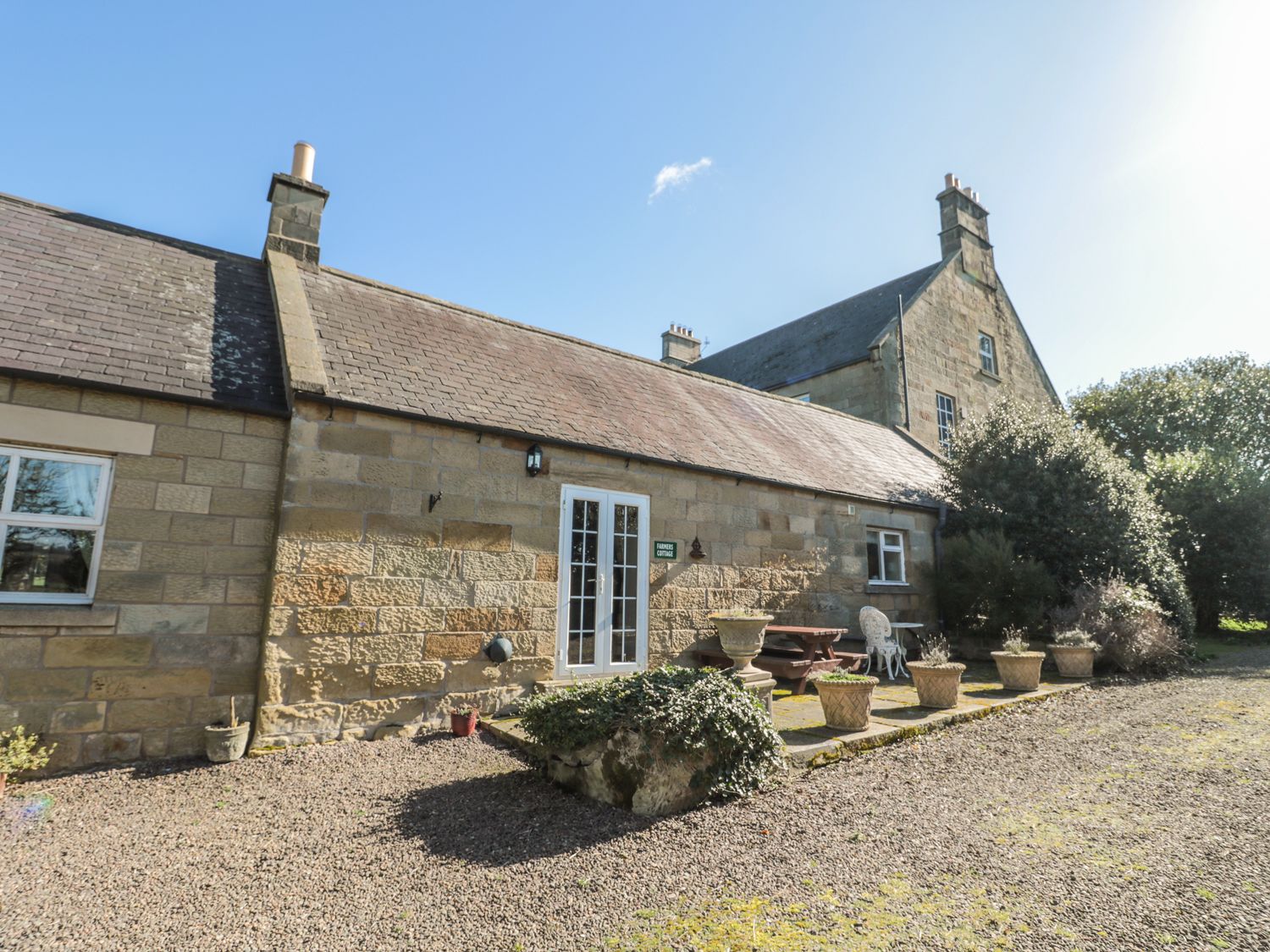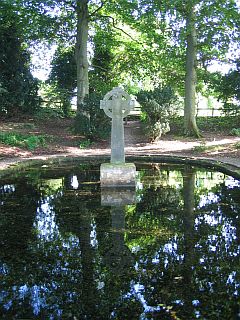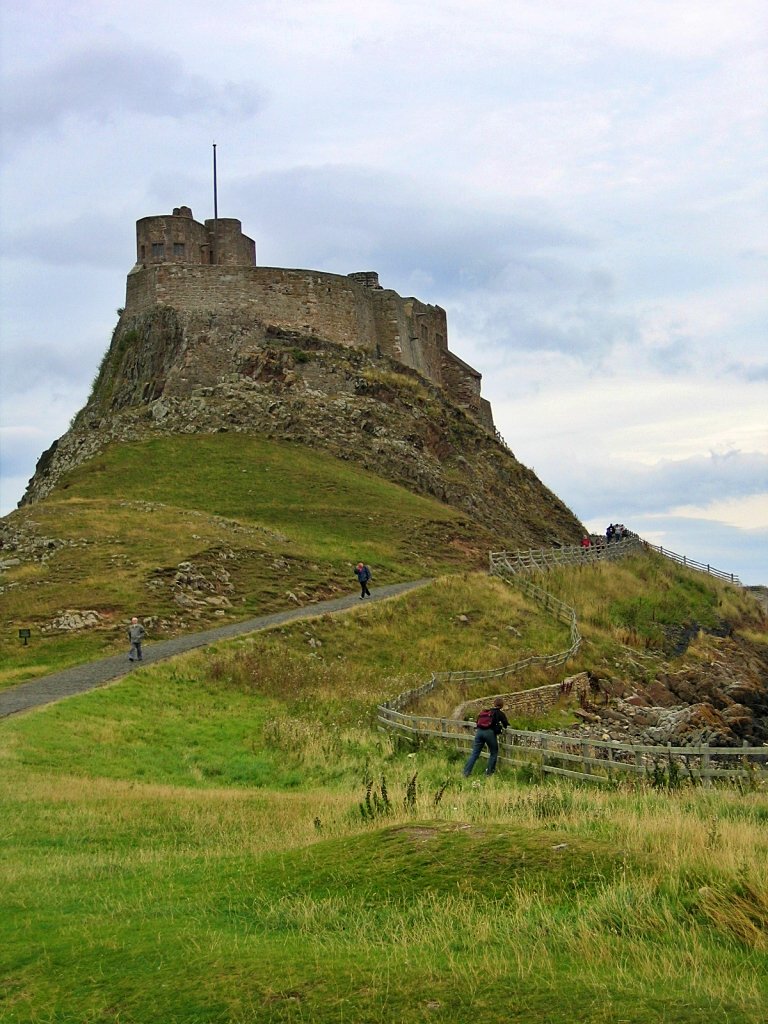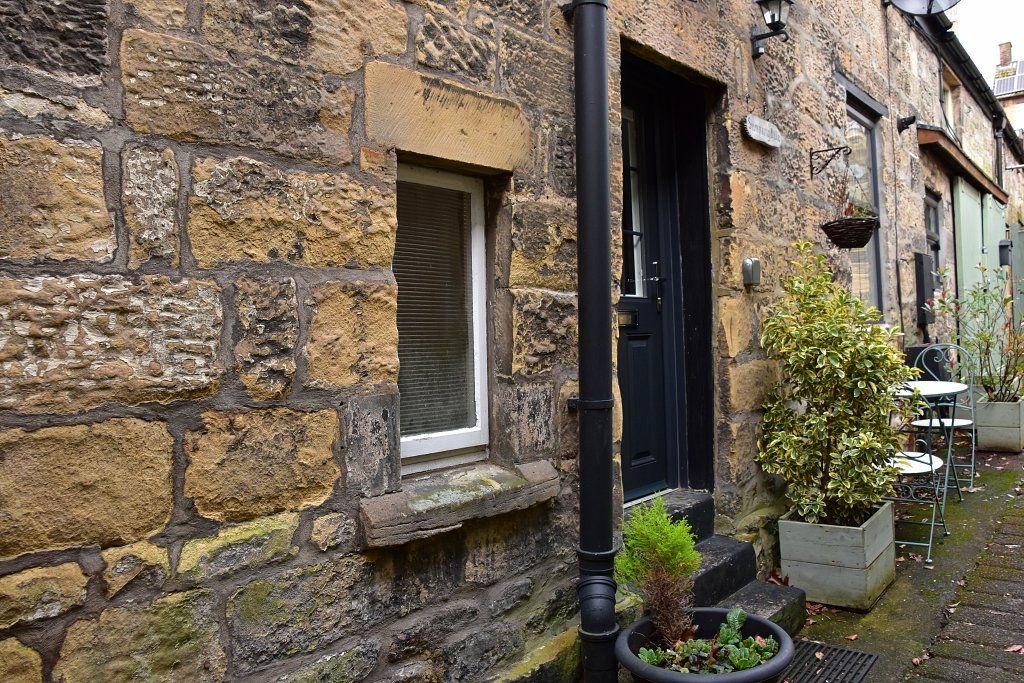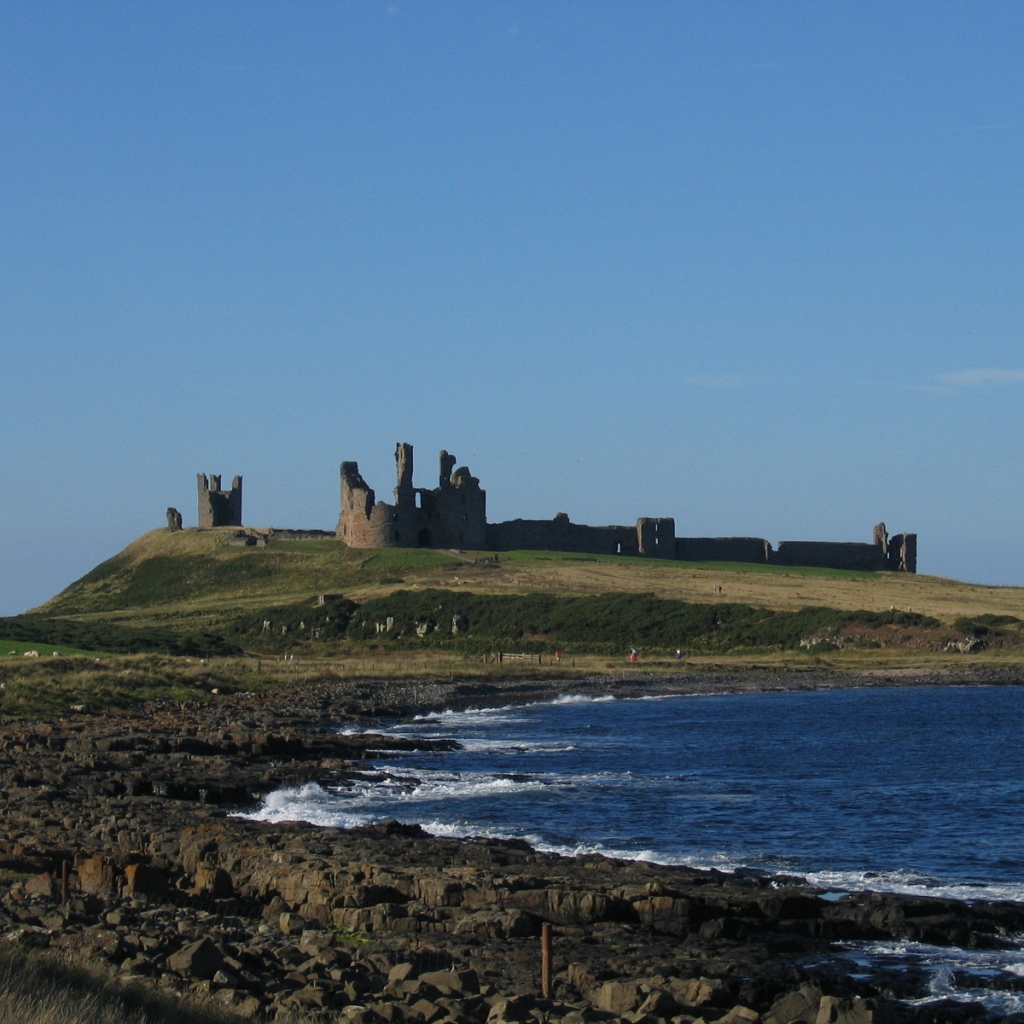Bamburgh Castle
A Dramtic Coastal Castle in Northumberland
Bamburgh Castle stands magnificently on the Great Whin Sill rock outcrop on the shore of the wild North Sea in Northumberland. Due to its location in an Area of Outstanding Natural Beauty, it is probably one of the most photographed coastal castles in England. The castle has a long history and has been the scene of many battles. It even gained the claim to fame of being the first castle in England to be defeated by weapons using gunpowder during the War of the Roses in 1464!
Given its violent history and the harsh conditions of its position on the edge between land and sea, it may come as a surprise that Bamburgh Castle is still a complete castle and has been the private home of the Armstrong family since 1894.
What isn't surprising is the fact that this lovingly restored castle, estate, and beach have been used in many films and dramas, including the latest Indiana Jones film, Transformers: The Last Knight, The BFG, and Macbeth to name but a few.
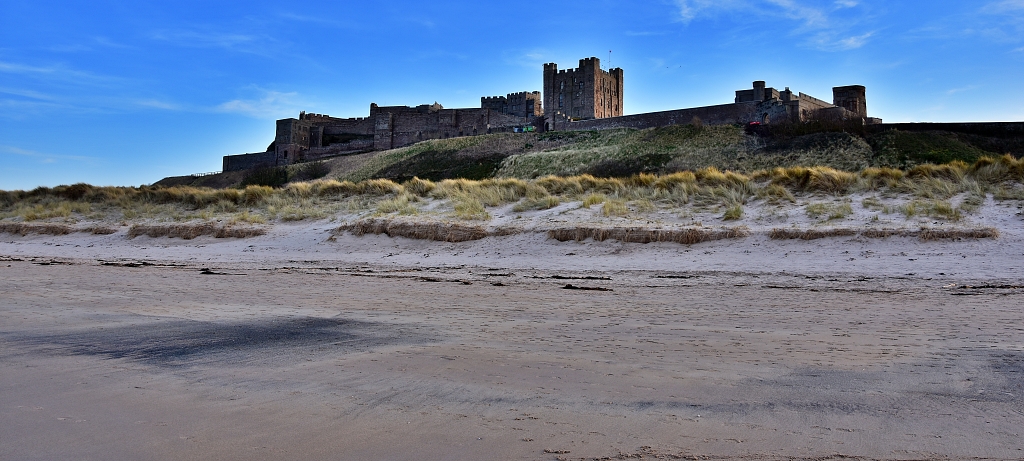 View of Bamburgh Castle from the Beach © essentially-england.com
View of Bamburgh Castle from the Beach © essentially-england.com
History of Bamburgh
Castle
The first defensive structure on the Bamburgh Castle site was recorded back in the sixth century, when England was split into seven Anglo-Saxon kingdoms.
The Bernician king, Ida, is believed to have constructed a wooden fortification at Bamburgh around the year 550, making it a Royal capital which they called Din Guaydri. It was his grandson Aelthefrith who created Northumbria by merging the kingdoms of Bernicia and Deira to form one of the largest and most powerful kingdoms in England. Northumbria was larger than what is now Northumberland and stretched from the Firth of Forth in Scotland down to the River Humber and westwards to the Cumbric kingdoms.
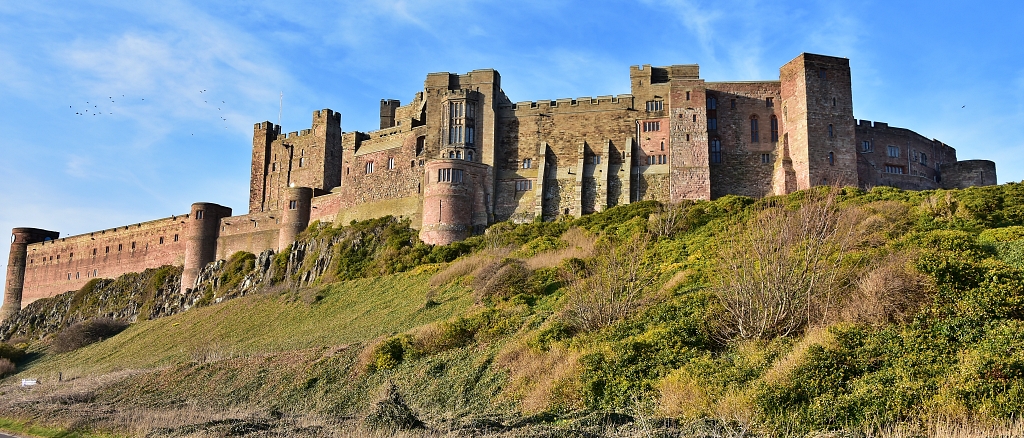 View of Bamburgh Castle from the Road © essentially-england.com
View of Bamburgh Castle from the Road © essentially-england.comKing Aelthefrith’s son, Oswald, was possibly one of the most memorable Kings of Northumbria. Having been schooled and baptised by monks in Iona he returned to Bamburgh with St. Aidan to whom he gave land on Lindisfarne to build Lindisfarne Priory. The Lindisfarne Gospels originated from this priory, and the area gained the title of “The Cradle of Christianity”.
Although Oswald had strong Christian beliefs, he still had to lead his army in battle to defend Northumbria. One such battle was won at Heavenfield in 635. Before the battle, Oswald raised a large cross in the place where St. Oswald’s Church stands today. Later Christians gave his name to a pilgrimage route from the church to Lindisfarne Priory, calling it St. Oswald’s Way.
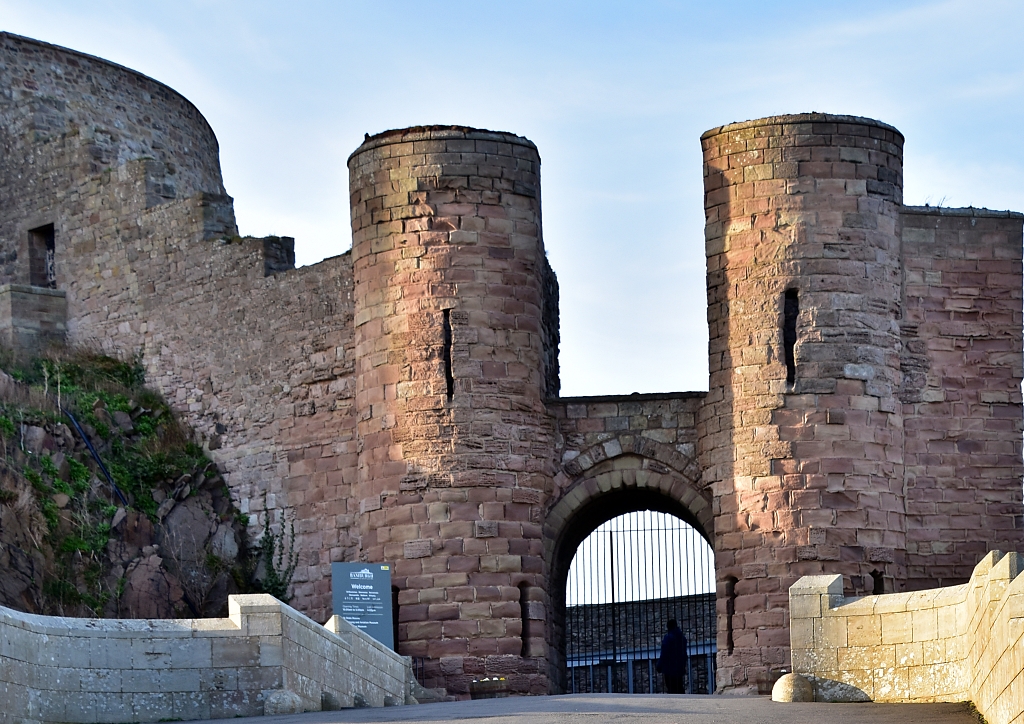 The Outer Gatehouse © essentially-england.com
The Outer Gatehouse © essentially-england.comOver the next few hundred years, the Bamburgh Castle was attacked time and again by the Scots, other Anglo-Saxon kingdoms, and from the sea by the Vikings. Around the year 1000, the defensive fortification had fallen into disrepair.
In 1095, William Rufus, the son of William the Conqueror, began to rebuild Bamburgh as a new Norman defensive position. Realising the importance of a fortress close to Scotland and the northeast coast, he built a castle with a stone keep.
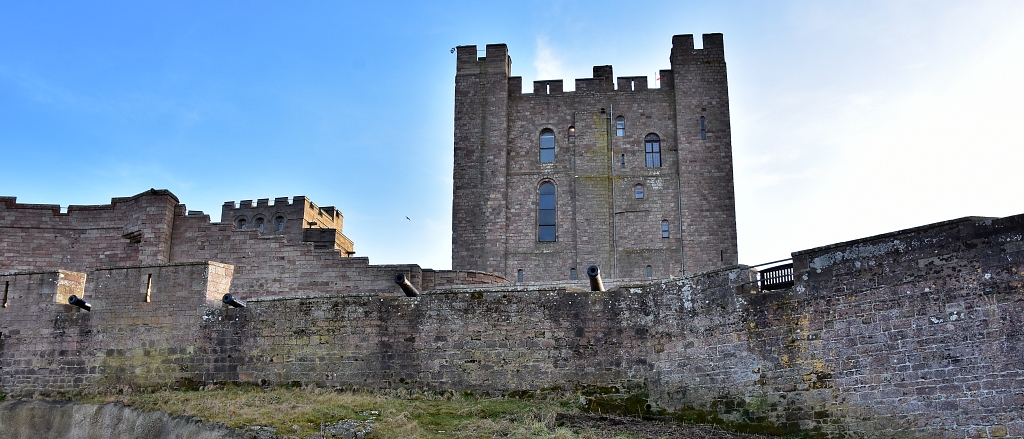 Bamburgh Castle Keep © essentially-england.com
Bamburgh Castle Keep © essentially-england.comThe Scots didn’t wait long before attacking Bamburgh Castle. 1135 saw the first of many attacks until the Scots were defeated at the Battle of the Standard in 1138.
By 1157 King Henry II was back in command of northern England and kept Bamburgh Castle as a Royal Castle. During this time, he completed the Great Keep. Over the coming centuries the castle served as a royal palace and kings John, Henry III, Edward I, Edward II, and Edward III all resided here.
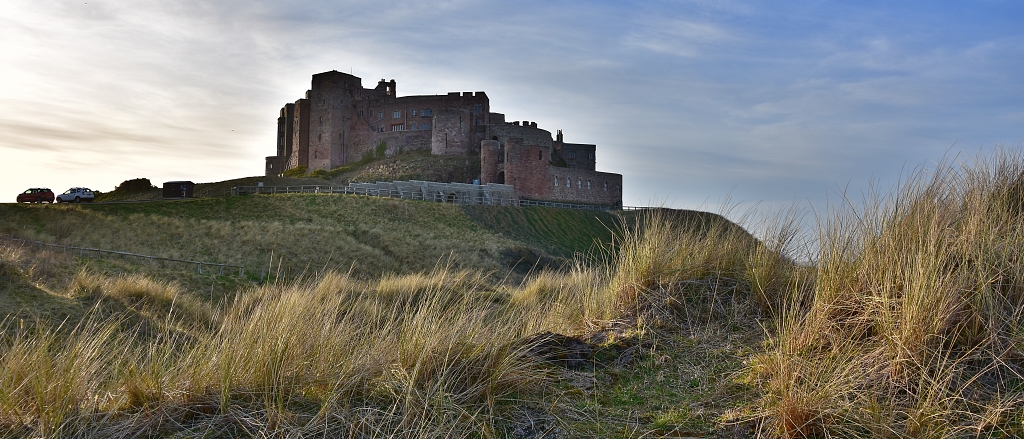 Bamburgh Castle from the Sand Dunes © essentially-england.com
Bamburgh Castle from the Sand Dunes © essentially-england.comNorthumberland was a borderland, much fought over throughout its history. Scottish attacks on Bamburgh continued into the fourteenth century. After battles in 1333 and 1346, Bamburgh Castle was used as a prison for the Scottish King David II.
Bamburgh Castle was finally defeated in 1464 during the War of the Roses. The Yorkists attacked the Lancastrian stronghold with canon fire and managed to knock down one of the towers to gain entry to the castle. Bamburgh's first defeat in 900 years!
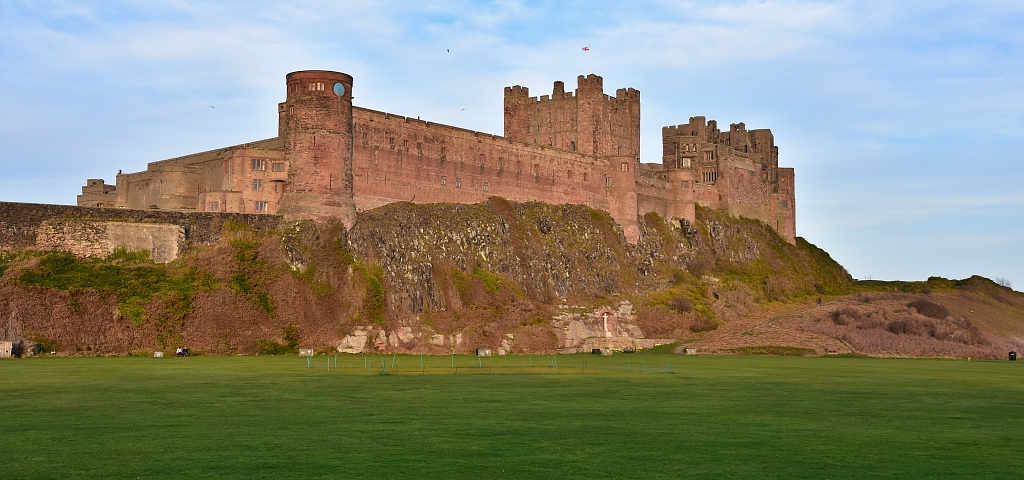 The Cricket Ground in Front of Bamburgh Castle © essentially-england.com
The Cricket Ground in Front of Bamburgh Castle © essentially-england.comIn 1610, Bamburgh Castle became the property of Claudius Foster, son of the castle's previous warden. At his death in 1623, the castle and estate were in poor condition, which didn't improve until Victorian times, despite trustees trying to rescue the buildings.
The castle's real saviour was William Armstrong, owner of Cragside House in nearby Rothbury, who started to restore Bamburgh with a modern, more comfortable Victorian twist. He planned to convert the castle into a home in which retired gentlemen could convalesce. He didn’t get to see his plan to completion, but his family finished the project and made Bamburgh Castle their home.
Our Visit to Bamburgh Castle
Most of our Northumberland visits predate Essentially England and digital photography, so when we visited Bamburgh Castle on a sunny, late-March afternoon, we couldn't stop taking photos and soaking up the atmosphere of this stunning castle and its amazing setting. Even if you’re not interested in English history, you'd love this place. Just make sure to bring a camera as Bamburgh is photogenic from every angle - even if you just wander along the beach!
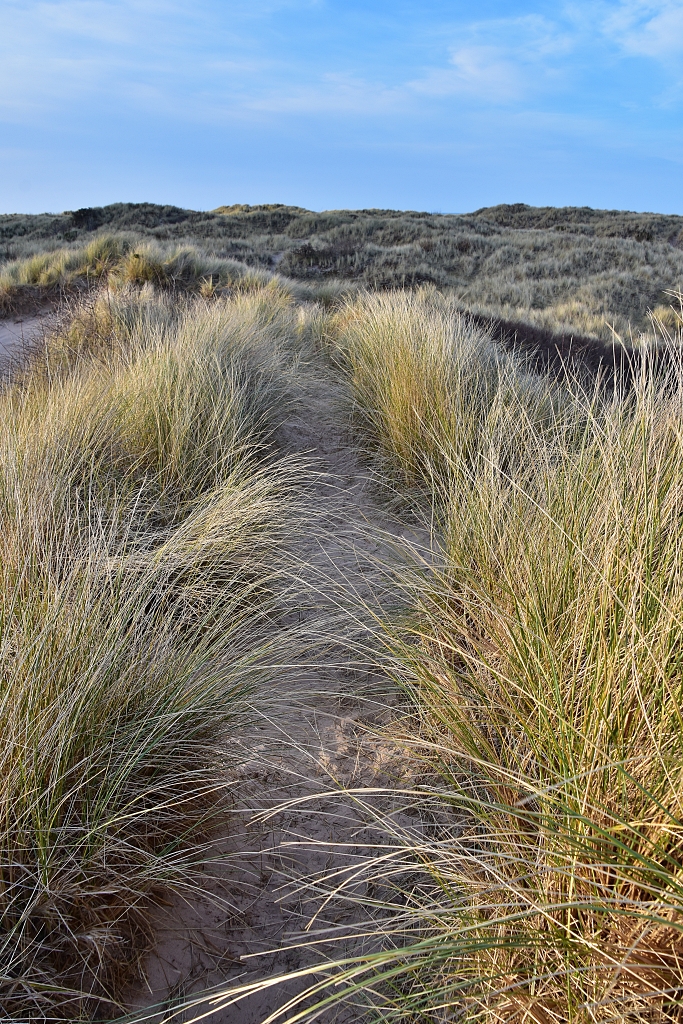 Walking Through the Sand Dunes to Bamburgh Beach
Walking Through the Sand Dunes to Bamburgh Beach © essentially-england.com
After climbing up to the Castle Gatehouse, you need to descend through a wall of sand dunes to get to the beach. It is a bit of a maze, but once down on the sand, you'll understand why the short trek is necessary. Just look at the beach and the views!
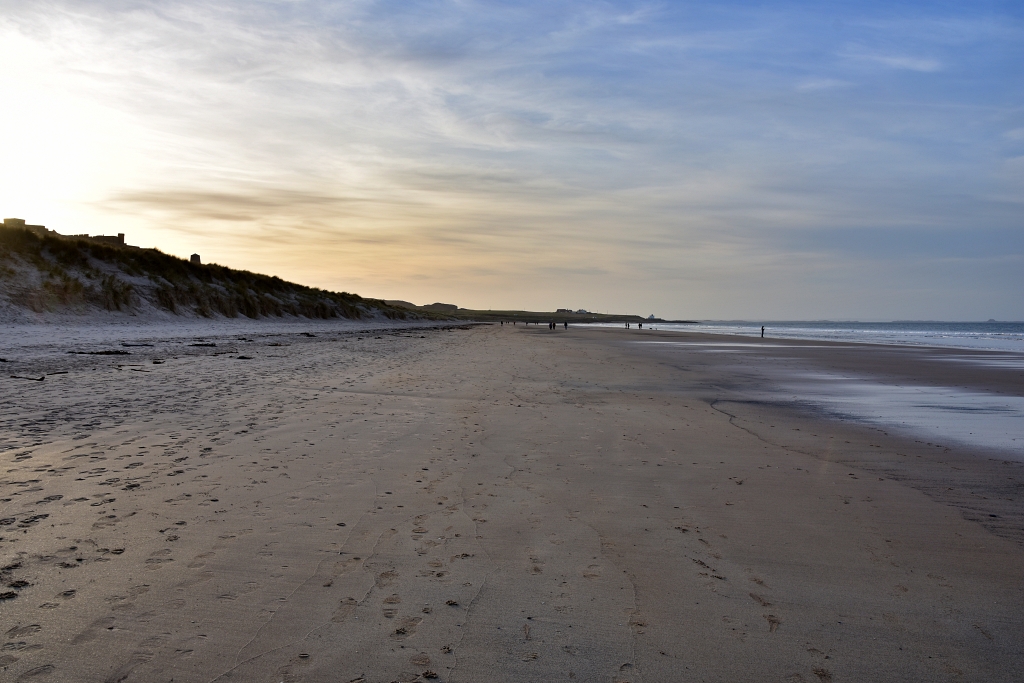 Bamburgh Beach in the Late Afternoon © essentially-england.com
Bamburgh Beach in the Late Afternoon © essentially-england.comThe beach is
vast, and when we were there, it was almost empty. We had views out to the Inner
Farne Islands and across to Lindisfarne, and all the things we love most about Northumberland: the amazing light, the vast space, and the expansive views out to sea.
Sorry, I’m rambling! Of course, we were here to see a great castle with a very long history!
 The View Towards Lindisfarne © essentially-england.com
The View Towards Lindisfarne © essentially-england.comIt's possible to visit the two islands visible from the beach. Twice a day at low tide, the Holy Island of Lindisfarne is accessible via its causeway. The Farne Islands are a little harder to get to, but regular boat trips from Seahouses - a little further along the coast - are available. Just remember to take waterproof clothing or ponchos with you, as you’ll likely to get wet on the boat journey.
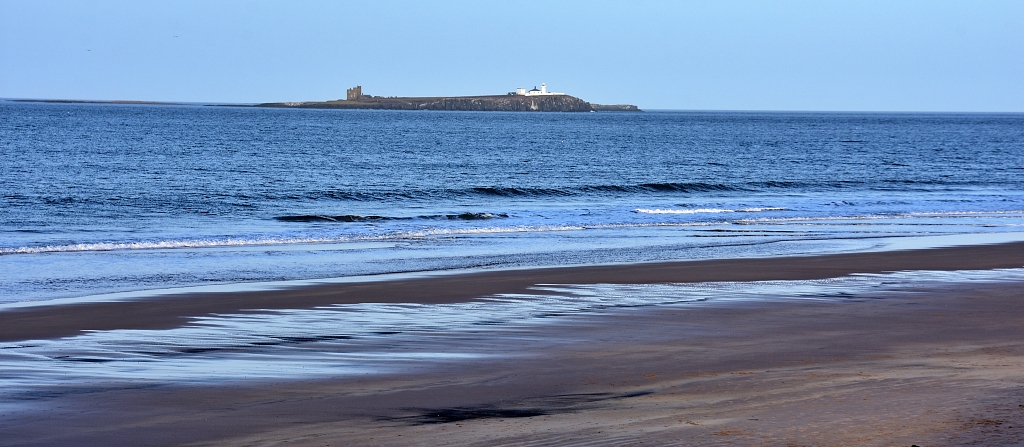 Inner Farne Island © essentially-england.com
Inner Farne Island © essentially-england.comWe reached Bamburgh at the tail end of a very long drive, so we were too late to explore the castle, or do more than wander along the main street of Bamburgh village. For such a small, pretty village it offered plenty of places to stay, eat, and shop, and the architecture of the buildings was pleasing to the eye. I’m not really a cricket fan, but I would really like to be here on a summer's day and watch the local cricket team play. With the cricket pitch just in front of the castle, it must be the most picturesque pitch in England!
Other things to see in Bamburgh include the RNLI Grace Darling Museum, the Stag Rock Lighthouse, and the Duckett, which was used to raise pigeons to feed to the people in the village and castle.
Are You Planning to Visit Northumberland?
Where You Could Stay
There's a reason Northumberland is one of my favourite English counties. Its landscape is utterly gorgeous with long beaches and empty sweeps of hills that just beg to be walked. In between you can find small towns and pretty villages, conntected by lanes that are great on the bike as long as you have the legs for climbing. And there are holiday cottages to suit all tastes and budgets.
To see other holiday cottages in Northumberland click here. Or check out holiday cottages in other parts of England by clicking here.
Or you could try a family orientated Parkdean Resort in Northumberland.
If you need to find a hotel, then try one of these search platforms...
What You Could See and Do
Even if you stayed a month, you'd find that you don't have enough time to explore the county top to bottom and see everything it has to offer. There's plenty of history from Hadrian's Wall to Lindisfarne in the north with reams of castles and ruins in between. There are beaches and seaside towns like Craster, Alnmouth and Seahouses - and some of the best fish & chips in all of England. There are market towns like Haltwhistle, Rothbury, Bellingham, Berwick, Warkworth and Harbottle to explore. And there are hillsides to climb and the great outdoors to enjoy.
Are you feeling in need of a holiday yet? Here are a few more pages that might give you ideas...
- Berwick-upon-Tweed
- Alnwick Castle
- The Holy Island of Lindisfarne
- Warkworth Castle
- Dunstanburgh Castle
- Cycling in Northumberland - my favourite tandem tour EVER!
- Visit the beach at Alnmouth.
- Stroll around Alnwick town.
And if you want to explore more of Northumberland and its martial history, check out this Northumberland Castle Tour.
For more Northumberland sites return from Bamburgh Castle to the Northumberland page.

